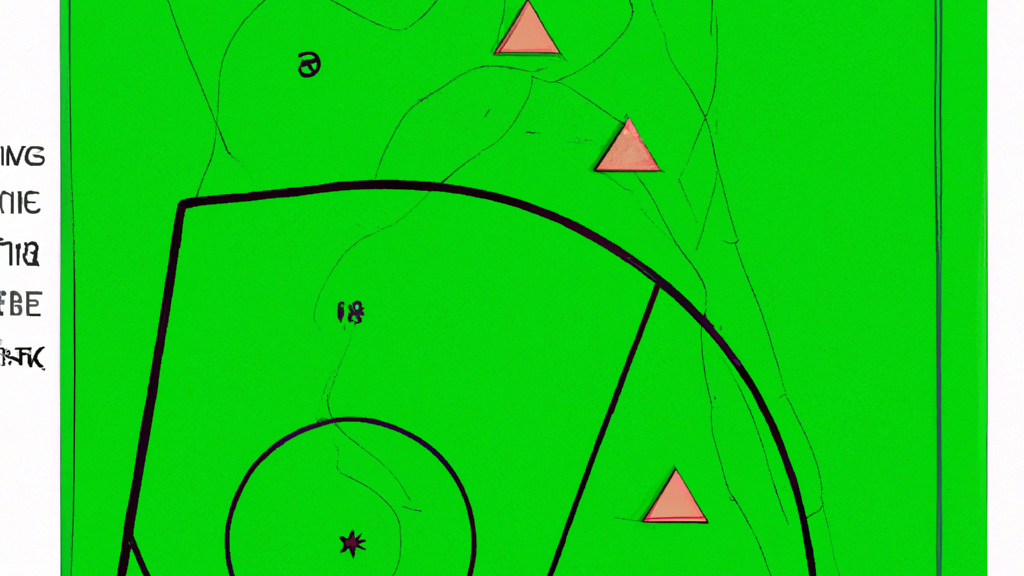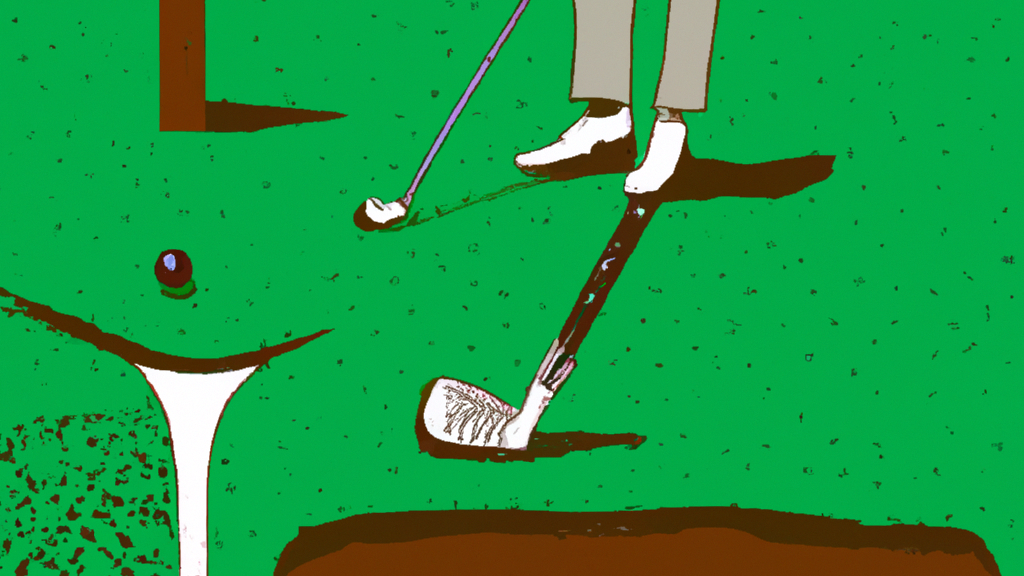GOLF COURSE MANAGEMENT: A GUIDE TO TREE MANAGEMENT
Golf courses are known for their lush greenery and scenic landscapes, but maintaining these natural beauties requires a lot of effort and expertise. One of the most important aspects of golf course management is tree management. Trees not only add to the aesthetic appeal of a golf course but also play a crucial role in the game itself. However, managing trees on a golf course can be a daunting task, especially for those who are new to the field.
That’s why we’ve put together this comprehensive guide to help golf course managers and professionals navigate the ins and outs of tree management. From identifying the right species to pruning and removal techniques, we’ll cover everything you need to know to keep your golf course looking its best. So, whether you’re a seasoned pro or just starting out in the golfing world, read on to learn more about golf course management and tree management.

GOLF COURSE MANAGEMENT: A GUIDE TO TREE MANAGEMENT
Golf courses are known for their lush greenery and scenic landscapes. However, maintaining a golf course is not an easy task. It requires a lot of effort, time, and resources to keep the course in top condition. One of the most important aspects of golf course management is tree management. Trees are an integral part of any golf course, but they can also pose a significant challenge if not managed properly. In this article, we will provide a comprehensive guide to tree management for golf course managers.
Why is Tree Management Important?
Trees are an essential part of any golf course. They provide shade, beauty, and a natural habitat for wildlife. However, trees can also cause problems if not managed properly. Overgrown trees can obstruct golfers’ views, interfere with golf shots, and even pose a safety hazard. Trees can also compete with turfgrass for water and nutrients, leading to poor turf quality. Therefore, it is essential to manage trees on a golf course to ensure that they do not cause any problems.
Tree Management Techniques
There are several tree management techniques that golf course managers can use to maintain a healthy and safe golf course. These techniques include:
-
Pruning
Pruning is the process of removing dead, diseased, or overgrown branches from a tree. Pruning is essential for maintaining the health and safety of trees. Dead or diseased branches can fall and cause damage or injury, while overgrown branches can obstruct views and interfere with golf shots. Pruning also helps to shape trees and promote healthy growth.
-
Thinning
Thinning is the process of removing some of the branches from a tree to reduce its density. Thinning helps to improve air circulation and sunlight penetration, which can promote healthy growth and reduce the risk of disease. Thinning also helps to reduce the weight of the tree, which can reduce the risk of branch failure.
-
Crown Reduction
Crown reduction is the process of reducing the height or spread of a tree’s crown. Crown reduction is often used to reduce the risk of branch failure or to clear views. Crown reduction should be done carefully to avoid damaging the tree’s health or appearance.
-
Tree Removal
Tree removal is the process of removing a tree from a golf course. Tree removal should only be done if the tree is dead, diseased, or poses a safety hazard. Tree removal should be done carefully to avoid damaging the surrounding turf or structures.
Tree Management Best Practices
In addition to these tree management techniques, there are several best practices that golf course managers should follow to ensure effective tree management. These best practices include:
-
Develop a Tree Management Plan
A tree management plan is a comprehensive plan that outlines the goals, objectives, and strategies for managing trees on a golf course. A tree management plan should include an inventory of all trees on the golf course, a schedule for pruning and other tree maintenance activities, and a plan for dealing with diseased or hazardous trees.
-
Hire a Professional Arborist
Tree management is a specialized field that requires expertise and experience. Golf course managers should consider hiring a professional arborist to manage their trees. A professional arborist can provide expert advice on tree management, identify potential problems, and recommend appropriate solutions.
-
Use Proper Pruning Techniques
Pruning is a delicate process that requires skill and knowledge. Golf course managers should ensure that their staff is trained in proper pruning techniques to avoid damaging the tree’s health or appearance. Improper pruning can lead to disease, decay, and even death of the tree.
-
Use Proper Equipment
Tree management requires specialized equipment, such as pruning shears, chainsaws, and chippers. Golf course managers should ensure that their staff is trained in the proper use of this equipment to avoid accidents or damage to the tree.
-
Monitor Tree Health
Regular monitoring of tree health is essential for effective tree management. Golf course managers should inspect their trees regularly for signs of disease, insect infestation, or other problems. Early detection of problems can help to prevent further damage and ensure the health of the tree.
Conclusion
Tree management is an essential aspect of golf course management. Proper tree management can help to maintain a healthy and safe golf course, while also enhancing its beauty and natural habitat. Golf course managers should develop a comprehensive tree management plan, hire a professional arborist, use proper pruning techniques and equipment, and monitor tree health regularly to ensure effective tree management. By following these best practices, golf course managers can ensure that their trees are an asset to their golf course, rather than a liability.

- Public Assistance
FEMA 325, Public Assistance Debris Management Guide … Still hanging in a tree and threatening a public-use area, e.g. trails, sidewalks, golf cart. - Spotted Lanternfly Management Guide
Aug 12, 2021 … SLF alone may not kill the tree. Some plants are at more risk than others (e.g., grapevines, maple, black walnut). Death has only been noted in … - TARGET Golf Course Tree Management – by Lilly (Hardcover …
Golf Course Tree Management will teach you the basic science, along with real world techniques to assist your in-house tree care program, to guide you in … - Golf Course Tree Management: Lilly, Sharon: 9781575041179 …
Golf Course Tree Management will teach you the basic science, along with real world techniques to assist your in-house tree care program, to guide you in … - Davey Tree: Professional Tree Services by Davey Certified Arborists
Commercial Grounds Maintenance · Water Management · Landscape Enhancements · Commercial Tree Care Solutions · Commercial Snow Removal · Golf Course Solutions. - COLORADO GOLF INDUSTRY BEST MANAGEMENT PRACTICES …
… Practices Guide. Rocky Mountain Golf Course Superintendents Association … BMPs in order to guide golf courses in balanc- … Shade and Tree Management. - Questions To Ask When Evaluating Trees on the Golf Course
Mar 17, 2023 … Managing and removing trees are often two of the most contentious topics at many facilities. To help guide tree management decisions and create … - Best Management Practices Guide
Geography, climate, and soils create unique identities, benefits, and challenges for Texas golf courses. Golf course maintenance BMPs help promote stewardship … - Hazard Tree Guidelines For Forest Service Facilities and Roads in …
Training in identification, mitigation and management of hazardous trees, as well as in the use of the International Tree Failure Database. Training may range … - Tree Management Plan | golf-architecture
Richard Mandell Golf Architecture can guide clubs and courses in a Tree Mangement/Removal Program to determine what trees need to be removed, replaced, pruned, …
Fun facts about Golf Course Management: A Guide to Tree Management
- The first recorded game of golf was played in Scotland in the 15th century.
- Golf is one of only two sports to have been played on the moon (the other being javelin).
- The Masters Tournament, held annually at Augusta National Golf Club, has a tradition where the winner receives a green jacket.
- Tiger Woods is considered one of the greatest golfers of all time and has won 82 PGA Tour events, tied for most all-time with Sam Snead.
- In professional golf tournaments, caddies are allowed to give advice and help players choose clubs but cannot touch or move their ball.
- Many country clubs offer amenities beyond just golfing such as tennis courts, swimming pools and fine dining restaurants.
- The Ryder Cup is a biennial team competition between Europe and America that dates back to 1927





